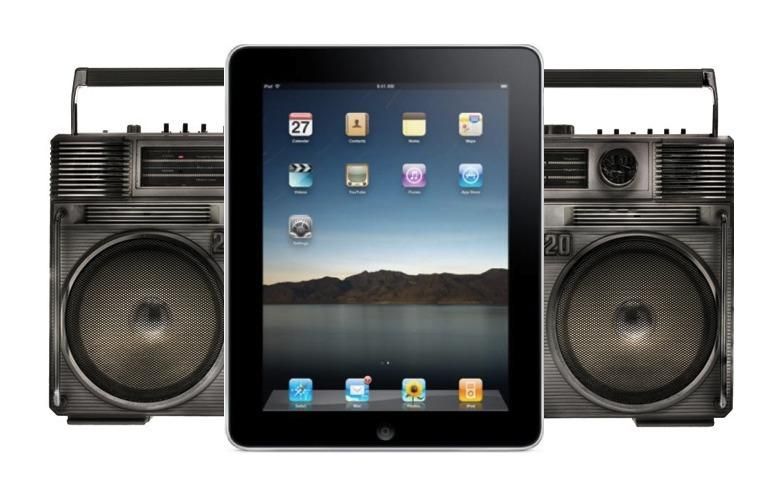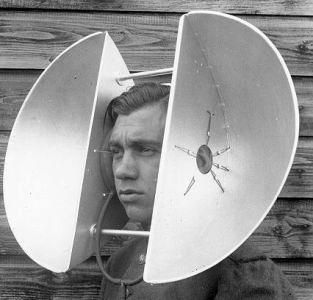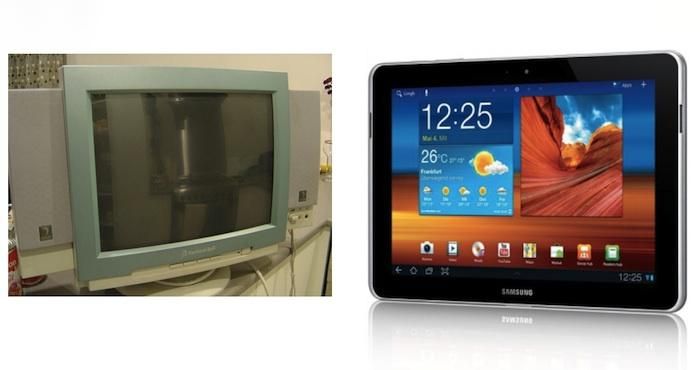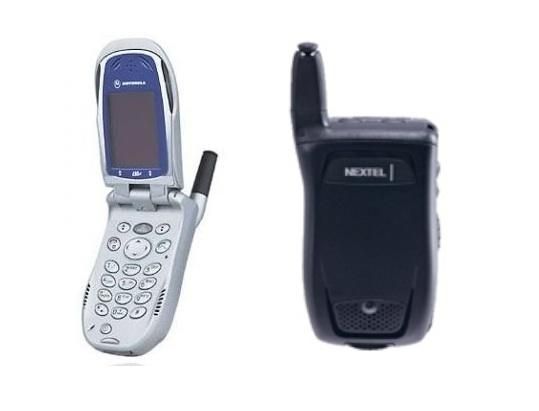Picture this: you're lying in bed with your favorite tablet, catching up on the latest episode from the AMC series Hell On Wheels . You can substitute any TV show, movie, or YouTube series there, really, but Hell On Wheels is pretty amazing.
Anyway, you're lying there, jaw agape at the realization that maybe the rapper Common can actually act, but you've got a problem. While the visuals are stunning on your 2012-edition iPad's Retina display, or passable on the lighter, slimmer Nexus 7's screen, you can't really hear anything.
You reach to the volume toggle, hoping to avoid a repeat of the usual disappointing cycle of events, but there's no refuge to be had. You stab the up-volume button repeatedly but in vain, the software informing you that the tablet's volume is already set to maximum.
The reason you can't hear anything, aside from the tiny speakers most OEMs are forced by design constraints to use, is that most of the sound they generate is going the wrong direction. With few exceptions, almost every modern tablet has followed the example of nearly every modern smartphone, placing the speakerphone on the back of the device. So if you're like me, you have only one option (aside from admitting defeat and switching to headphones). Unleashing a now-familiar sigh of frustration, you hold the tablet in one hand, then slide a hand toward the back of its casing, cupping your palm to reflect some of that misdirected sound back toward your ear. It's uncomfortable, largely ineffective, and it looks ridiculous.
“Ridiculous” being a relative term, of course.
This situation, which we discussed on last week's episode of the Pocketnow Weekly podcast, is annoying. But what follows isn't a rant against manufacturers; they're up against enormous challenges when it comes to tablet design. Just like the smartphones that preceded them, today's tablets are ensnared in a race to the slimmest dimensions. Every new tablet must be sleeker and lighter, while still packing in more power and more features. Additionally, the nature of tablets themselves poses another engineering challenge: with the entire front of the device occupied by the display -and with bezels getting slimmer and slimmer- the customer-facing side is prime real estate on tablet hardware. There's just no room for anything not absolutely necessary, like a front-facing camera or a home button (if it has one, which it shouldn't).
Like Mother Nature in Jurassic Park , though, engineers are "finding a way." When Samsung needed its Galaxy Tab 10.1n to look less like the iPad for legal reasons, it reshuffled a few components. Among those were the device's speakers, which Samsung brought around to the front. In the new design, they flank the display on either side, bracketing the screen as sometimes seen on newer-generation TVs and older-generation Packard Bell computer monitors.
Admit it: a part of you can see the family resemblance.
Before we got much chance to call the Tab 10.1's refresh a lawyer-prompted one-off, though, Samsung pulled a pretty cool move: it ported the new front-side speaker design to the new Galaxy Note 10.1. Even after a few redesigns, the new Note emerged at last week's NYC launch event bearing the new front-facing speakers. And they are a dream.
But the fun doesn't stop there. As we reported yesterday, Samsung is apparently rolling out a new addition to its family of iPod competitors, the Android-based Galaxy Player 5.8. The new device carries a form factor closely resembling that of the Galaxy S III, along with a large display measuring (surprise) 5.8 inches, Ice Cream Sandwich 4.0.4 with a spackling of TouchWiz, and ... yep, dual front-firing speakers.
If I were into personal media players, I would describe this as “ill-tipped.” Bro.
If these design developments, taken together, indicate a new direction for Samsung insofar as where it puts its speakers, it could be very good news indeed. For all the bunk the South Korean company gets for its propensity to copy others -some if it from my very own pen— it also pioneers more than its share of features. Were Samsung to settle on a strategy of building forward-facing speakers into its tablets going forward, it's a sure thing that other companies would follow in its wake. With a bevy of new Galaxy Tabs and Notes -perhaps even the Note II- leading the way, consumers would be buried in a whole new legion of aurally superior smart devices.
This isn't the first time this discussion has seen the light of day, but the topic's resurrection is long overdue. Back in 2003, Motorola launched a new line of iDEN mobile phones dubbed the "Falcon" series. Among the multitude of changes in the new line was the location of the speakerphone: it was moved from the front of the phone casing, firing sound through vented ports flanking the keypad, to a dedicated port on the back of each Falcon-series phone. The new speakers were louder, but the awkward placement proved an annoyance to longtime iDEN users.
Old on left, new on right. Talking into the back of a mobile phone: ‘taint natural.
Despite iDEN users vocally demanding the return of the old speakers, the new design continued through Motorola's entire Falcon line and partially into its successor, shackling customers to the awkward rear-mounted implementation for over seven years. No one wants that to happen to the current stable of tablets and smartphones.
If Samsung's recent moves are an indication of a trend, of its desire to shift to the more user-friendly and sensible front-firing speaker configuration, it could mean great things for the audio side of the user experience going forward. I hope Samsung remains strong in this path, and eventually brings the movement to phones. Because even when bone conduction shows up as a viable earpiece technology, people will still need speakerphones for hands-free calling, music listening, and making out what Colm Meaney's saying on Hell On Wheels . And for all our sakes, I hope we'll soon be listening to all those things through speakers mounted on the proper side of our devices.
Galaxy Player image source: SamMobile





